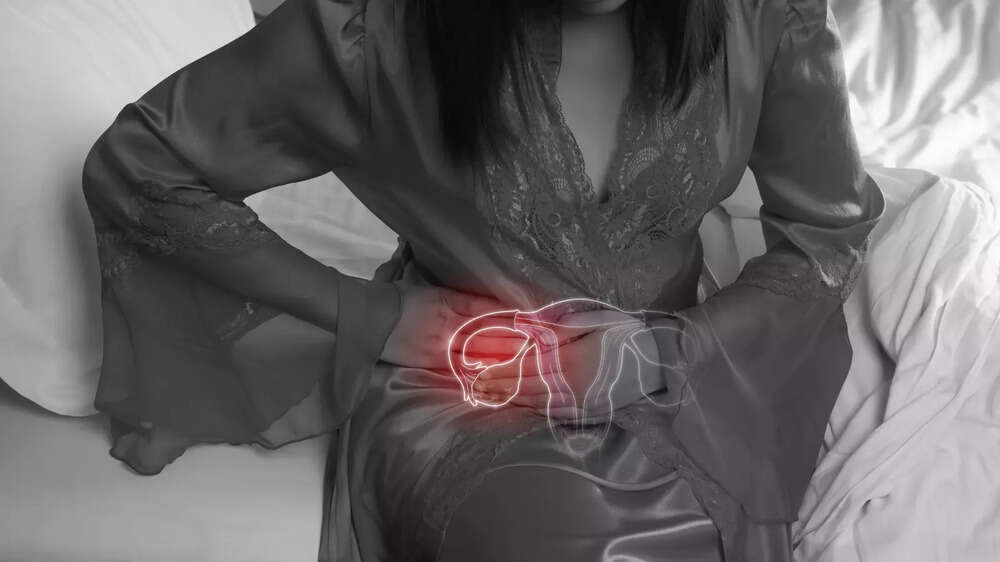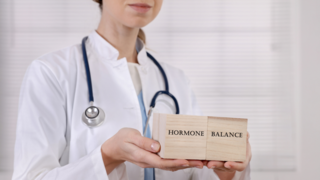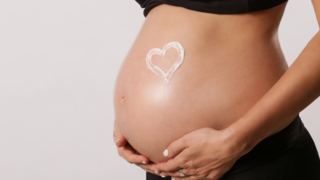Learning about adenomyosis and endometriosis, including their differences and how they impact fertility, will help you make informed decisions during your pregnancy journey.
What is Endometriosis?
The uterine lining is composed of tissues, but it may also grow outside the uterus in certain cases. This tissue can appear on your ovaries, fallopian tubes, or other parts of your pelvic area. This condition is called endometriosis.This tissue reacts to your menstrual cycle by thickening, breaking down, and bleeding each month. Since it grows outside the uterus, the blood has no way to leave your body. This causes pain, inflammation, and scarring.
Common symptoms include:
- Painful periods
- Pain during intercourse
- Heavy bleeding
- Infertility
- Fatigue
What is Adenomyosis?
Adenomyosis is a condition in which the tissues of your uterine lining grow into the muscular wall of the uterus. This can make your uterus larger and thicker than normal.Unlike endometriosis, the tissue stays within the uterus but invades the muscle layer. This leads to cramping, heavy bleeding, and discomfort.
Common symptoms include:
- Heavy or long periods
- Pain during periods
- Pelvic pressure or bloating
- Pain during intercourse
Key Differences Between the Two
While both conditions involve endometrial-like tissue, they differ in terms of their location and the ways they affect the body.| Aspect | Endometriosis | Adenomyosis |
| Location | Outside the uterus | Inside the muscle wall of the uterus |
| Symptoms | Pain, infertility, fatigue | Heavy bleeding, pressure, and cramping |
| Diagnosis | Often needs laparoscopy | Detected via ultrasound or MRI |
| Age Group | 20s to 40s | 30s and above |
| Impact on Fertility | Direct and often significant | Less direct, but still a concern |
Your doctor can decide the best way to manage your symptoms and support your fertility goals after identifying the correct condition.
How Endometriosis Affects Fertility
Endometriosis can interfere with your fertility in several ways:- Scar tissue may block the fallopian tubes, preventing fertilisation.
- Inflammation may harm eggs and sperm.
- Hormonal imbalances may affect ovulation.
- The uterus may not be a good environment for embryo implantation.
How Adenomyosis Affects Fertility
Adenomyosis can also impact fertility, and usually in more indirect ways:- The thickened uterus may interfere with embryo implantation.
- Inflammation may affect uterine function.
- Abnormal contractions may make it harder for the embryo to attach.
Treatment may include hormone therapy, lifestyle changes, or assisted reproductive techniques like IVF if conception is difficult.
Can You Have Both?
You can have both adenomyosis and endometriosis. The symptoms may be more intense, and the impact on fertility can be greater when both are present.In such cases, your doctor may recommend more detailed testing and a treatment plan that addresses both conditions.
Getting Diagnosed
Endometriosis is usually diagnosed through a laparoscopy. It is a small surgical procedure that allows your doctor to examine the inside of your abdomen and pelvis.Adenomyosis, on the other hand, is diagnosed through imaging tests like:
- MRI scans
- Transvaginal ultrasound
- In some cases, diagnosis is only confirmed after a hysterectomy, but newer imaging technology has made early diagnosis more common.
What Can You Do If You're Trying to Conceive?
Here are a few steps you can take if you suspect or have been diagnosed with endometriosis or adenomyosis and are trying to conceive:- Consult a fertility specialist. They can help create a plan that fits your condition and your timeline.
- Track your cycles to better understand ovulation and fertile windows.
- Consider lifestyle changes, such as managing stress, eating a nutritious diet, and maintaining a healthy weight within normal limits.
- Explore treatment options early, especially if you have been trying to conceive for more than 6 to 12 months without success.
Both adenomyosis and endometriosis can affect your fertility, but they are not the same. Endometriosis usually has a more direct effect on your ability to conceive. Adenomyosis can also create indirect challenges.
Fortunately, many women with these conditions become pregnant after proper diagnosis and the right treatment plan. Talk to your doctor, stay informed, and take one step at a time to support your reproductive health.






